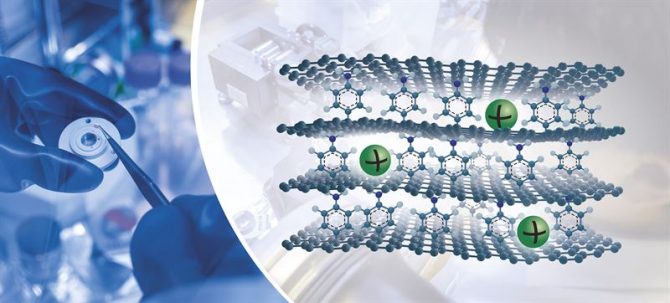
Janus graphene opens doors to sustainable sodium-ion batteries
By Chalmers University of Technology
Electronics Power Supply / Management batteries graphene power sodium-ionConcept for fabricating high-performance electrode materials for sodium batteries is based on a novel type of graphene
In the search for sustainable energy storage, researchers at Chalmers University of Technology, Sweden, present a new concept to fabricate high-performance electrode materials for sodium batteries. It is based on a novel type of graphene to store one of the world’s most common and cheap metal ions – sodium. The results show that the capacity can match today’s lithium-ion batteries.
Even though lithium ions work well for energy storage, lithium is an expensive metal with concerns regarding its long-term supply and environmental issues.
Sodium, on the other hand, is an abundant low-cost metal, and a main ingredient in seawater (and in kitchen salt). This makes sodium-ion batteries an interesting and sustainable alternative for reducing our need for critical raw materials. However, one major challenge is to increase the capacity.

The material used in the study has a unique artificial nanostructure. The upper face of each graphene sheet has a molecule that acts as both spacer and active interaction site for the sodium ions.
At the current level of performance, sodium-ion batteries cannot compete with lithium-ion cells. One limiting factor is the graphite, which is composed of stacked layers of graphene, and used as the anode in today’s lithium-ion batteries.
The ions intercalate in the graphite, which means that they can move in and out of the graphene layers and be stored for energy usage. Sodium ions are larger than lithium ions and interact differently. Therefore, they cannot be efficiently stored in the graphite structure. But the Chalmers researchers have come up with a novel way to solve this.
“We have added a molecule spacer on one side of the graphene layer. When the layers are stacked together, the molecule creates larger space between graphene sheets and provides an interaction point, which leads to a significantly higher capacity,” says researcher Jinhua Sun at the Department of Industrial and Materials Science at Chalmers and first author of the scientific paper, published in Science Advances.
10Xs energy capacity of standard graphite
Typically, the capacity of sodium intercalation in standard graphite is about 35 milliampere hours per gram (mA h g-1). This is less than one tenth of the capacity for lithium-ion intercalation in graphite. With the novel graphene the specific capacity for sodium ions is 332 milliampere hours per gram – approaching the value for lithium in graphite. The results also showed full reversibility and high cycling stability.
“It was really exciting when we observed the sodium-ion intercalation with such high capacity. The research is still at an early stage, but the results are very promising. This shows that it’s possible to design graphene layers in an ordered structure that suits sodium ions, making it comparable to graphite,” says Professor Aleksandar Matic at the Department of Physics at Chalmers.
